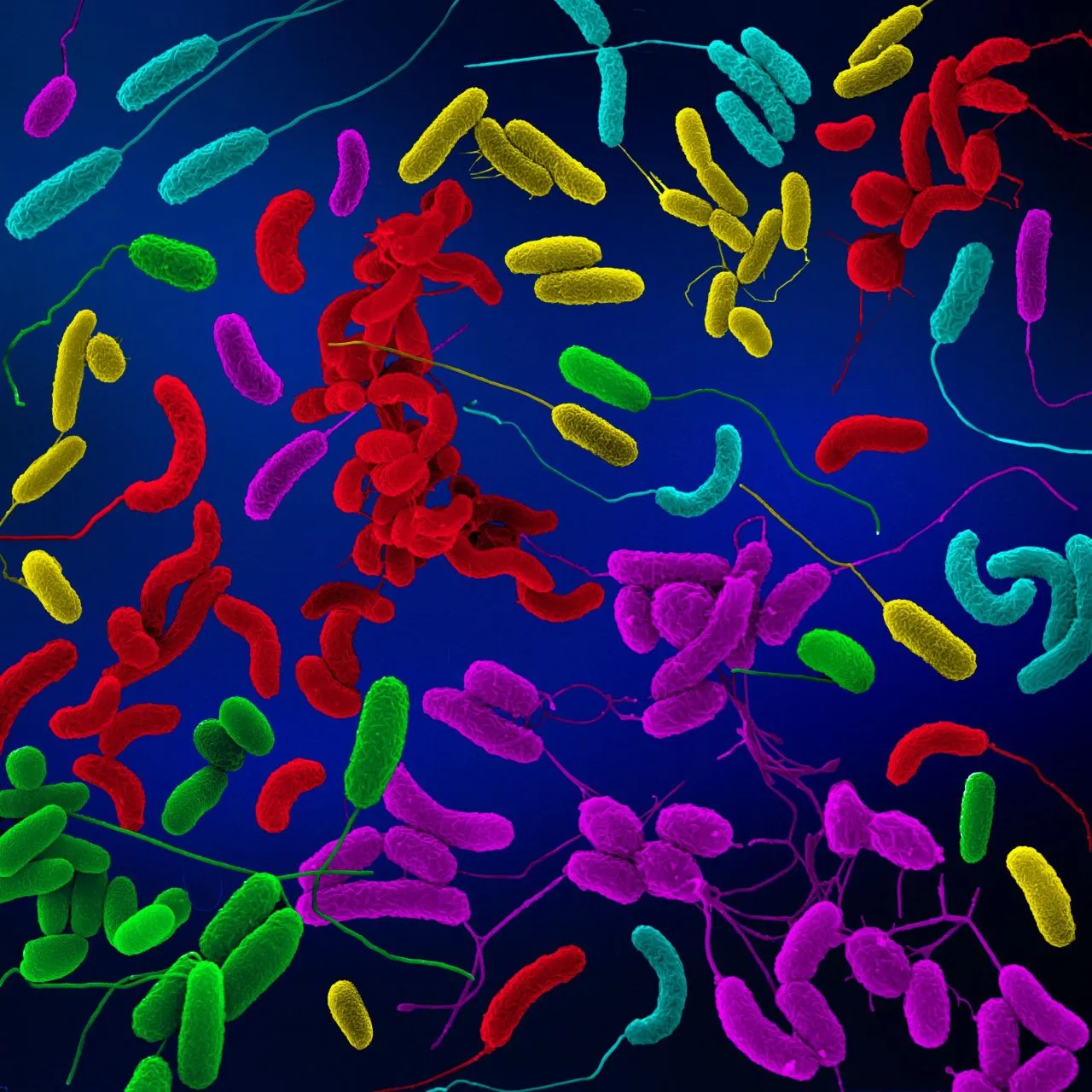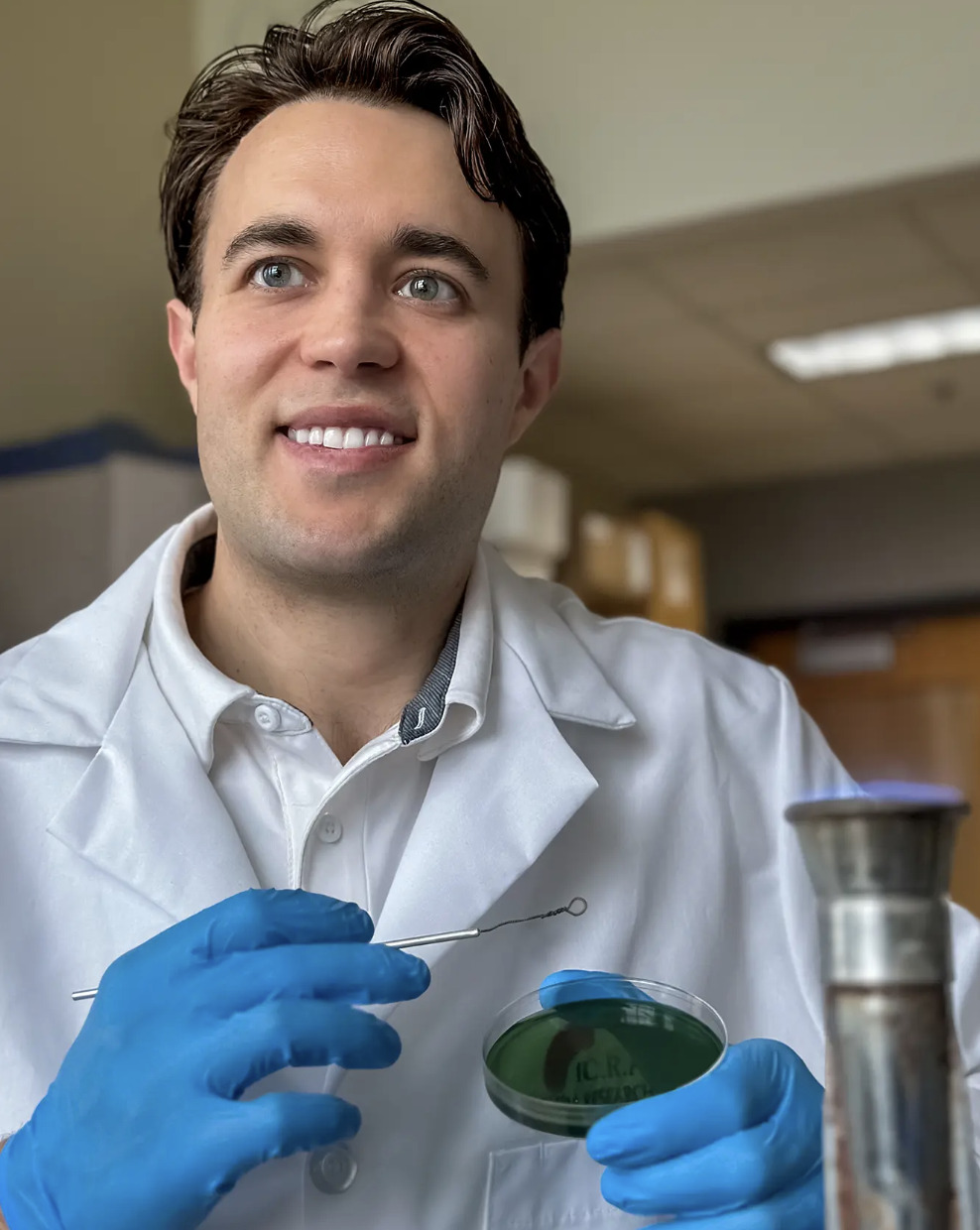

As an undergraduate and master’s student at Plymouth State University (PSU), Kyle Brumfield was deeply engaged in both academics and extracurricular activities, competing in NCAA hockey and later contributing to the team as a coach, all while balancing his lab work and studies.
But it was a specific topic in a microbiology class—the Vibrio bacteria—that piqued his interest most, ultimately setting him on a path that has led him to work alongside some of the world’s leading experts in this area.
As part of his graduate-level experience under the mentorship of Mike Son, an associate professor of microbiology at PSU, Brumfield explored how Vibrio species—which can cause cholera and other waterborne diseases—interact with marine life, notably zooplankton (copepods), in New Hampshire’s Great Bay Estuary. This work laid the foundation for his doctoral studies at the University of Maryland, where he joined the Marine-Estuarine Environmental Sciences (MEES) graduate program in 2017.
Brumfield describes MEES “one of the most interdisciplinary programs” and ideal because it allowed him to work in the laboratory of Rita Colwell, one of the world’s foremost experts on waterborne pathogens who is a Distinguished University Professor in both the University of Maryland Institute for Advanced Computer Studies (UMIACS) and the Department of Cellular Biology & Molecular Genetics (CBMG).
Brumfield says that Colwell, who first served on his master’s committee at PSU and subsequently became his Ph.D. adviser, has played a foundational role in his scientific journey. She helped open professional doors for him, he says—offering unique research opportunities, connecting him within her scientific network, and encouraging him to pursue global-scale problems that can potentially save lives.
“She’s very motivating, and she really pushed me to be the best version of myself—both in and out of the laboratory,” Brumfield says.
Colwell had equal praise for her former student, noting Brumfield’s strong work ethic in the laboratory and his ability to push the boundaries of existing research. “Kyle has succeeded extremely well in building on previous work done by others, and then moving forward into new methods of detection,” she says.
Those “new” methods include research thrusts involving microbial ecology, molecular genetics, and metagenomics, which is the study of genetic material recovered directly from environmental samples, allowing scientists to analyze entire microbial communities without the need to isolate individual organisms.
After finishing his Ph.D. in 2023, Brumfield continued research in the Colwell laboratory as a Postdoctoral Fellow through dual appointments in both UMIACS and CBMG.
His current research aims to enhance the sensitivity of DNA sequencing and metagenomics, a method that uses DNA fragments to profile microbial communities, making it easier to detect pathogens and identify genes linked to disease symptoms or antibiotic resistance.
This work is supported in part by an appointment to the Intelligence Community Postdoctoral Research Fellowship Program at UMD administered by Oak Ridge Institute for Science Education (ORISE) through the Department of Energy and the Office of the Director of National Intelligence, which supported his work at CBMG and access to high-end computing resources at UMIACS. Brumfield also interacts with researchers at UMD’s Applied Research Laboratory for Intelligence and Security, which develops and maintains deep expertise in human and social systems, advanced computing and emerging technology, and integrated human-machine systems.
He has continued his strong scientific connection with Colwell upon completion of his Postdoctoral Fellowship, with the two of them working with a team of scientists to co-author a paper, “Machine learning in understanding environmental variability of vibriosis in coastal waters.”
That study, published in August, examines how climate and weather influence the proliferation of Vibrio bacteria in coastal areas with a corresponding rise in reported cases, reinforcing the intersection of water, health, and microbial threats.
“Beyond rising temperatures, one of the most significant climate impacts we’re experiencing in the United States is the increasing frequency and intensity of major storm events,” Brumfield says. Brumfield, Colwell, and colleagues discuss the risks of Vibrio following hurricanes in the American Society of Microbiology’s journal mBio.
“Whenever I read about severe weather events in the news, I immediately think about the microbiological consequences," Brumfield says. “I’m always hoping someone will have read about our research—because many people don’t know the risks. For example, there is a common misconception that saltwater helps heal wounds, but that could not be farther from the truth.”
Brumfield recently authored an article in Scientific American that explains how dangerous bacteria are now present in significantly higher numbers in coastal waters and the Chesapeake Bay. And on August 11, Brumfield, Colwell and colleagues published a study in Proceedings of the National Academy of Sciences that shows how climate shifts increase the risk of waterborne pathogens like Vibrio.
In collaboration with Antar Jutla, a former NOAA Postdoctoral Fellow associated with the University of Maryland and now a professor of environmental engineering sciences at the University of Florida, the team is developing predictive models that can forecast when and where Vibrio outbreaks will occur. These machine learning models use environmental parameters as input and can forecast increased risk weeks in advance. With Jutla and his students, we can now provide near real time risk reports for the public through the Vibrio Prediction Hub, Brumfield says.
Brumfield relates that the collaborative environment and the computational and administrative support he received in UMIACS has been essential for his current postdoctoral work. “UMIACS is a globally respected institute,” he says, adding that the institute also has a dedicated computing cluster that allowed him to use new methods like high-throughput sequencing and machine learning to help determine not just which microbes are present, but what they’re doing.
He hopes his overall body work not only contributes to scientific understanding and public health but also helps educate communities—especially in areas where water systems may be less safe—about simple yet crucial preventative measures like handwashing, avoiding unsafe swimming conditions, and protecting open wounds.
“We know a lot of the risks, and we can predict them,” Brumfield says. “So, it's more about communicating those risks to the public. That has the biggest potential to make a large impact.”
—Story by Zsana Hoskins, UMIACS communications team